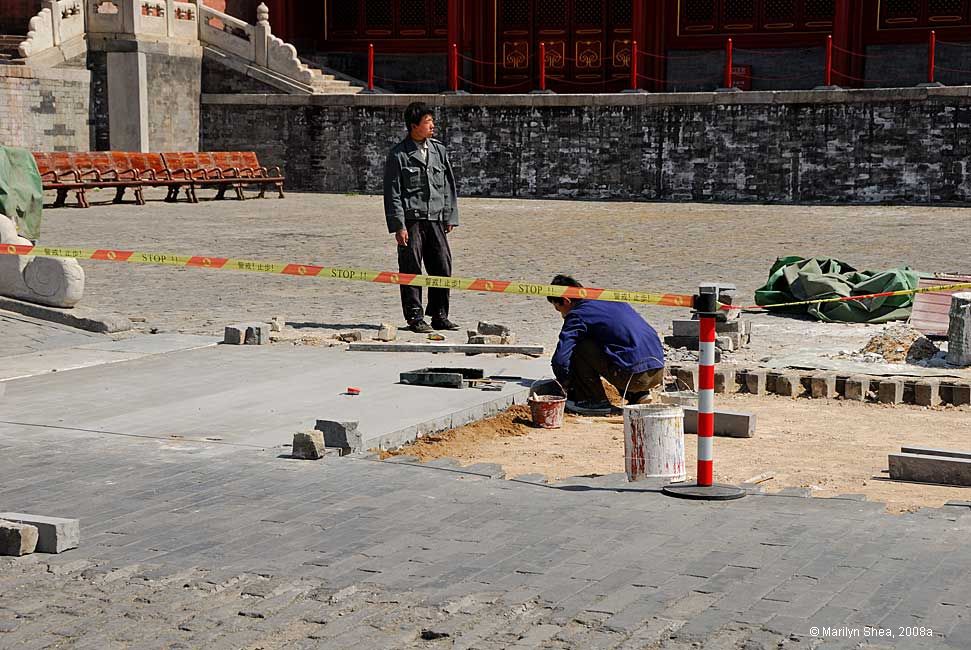 |
| The bricks of the central pathways need to be replaced regularly. Millions of tourists are a powerful force of erosion. At one time, the curators tried covering stairways with bamboo plates, but that procedure caused other problems.
Originally, there were fifteen layers of brick laid in the courtyards. Seven layers were laid lengthwise and eight layers crosswise. The emperors were always afraid of assassins. The walls were tall and guarded, there were no trees near the walls, the gates were barred at night, but there still remained a chance that someone would tunnel under the moat. If they did, there was no way that the effort would go undetected. The bricks would sink. The most famous assassination attempt didn't come through a tunnel, or even by overcoming elaborate defenses. It came from within. The Jiajing Emperor 嘉靖 (Jiājìng) started his reign in 1521. As had previous Ming emperors, he slept in one of several rooms in the Palace of Heavenly Purity 乾清宫 (Qiánqīng Gōng). He was a cruel man even by the standards of that era. He was particularly fond of torturing women, including his concubines, but more often the maids. In 1542, the palace maid Yang Jinying and at least 15 other people conspired to kill Jiajing. After he had gone to sleep, a number of maids snuck into his bedchamber and tried to strangle him. Yang Jinying tied the wrong kind of knot, one that could not be tightened. All 15 of the would-be assassins died the death of a thousand cuts. The Jiajing Emperor moved out of the Forbidden City to Xiyuan, West Garden, and withdrew from government. He never slept there again. After twenty years living in Xiyuan, he died the same day he moved back to the Palace of Heavenly Purity. |
http://hua.umf.maine.edu/China/HistoricBeijing/Forbidden_City/index.html
Last
update: January 2010
© Marilyn Shea, 2009